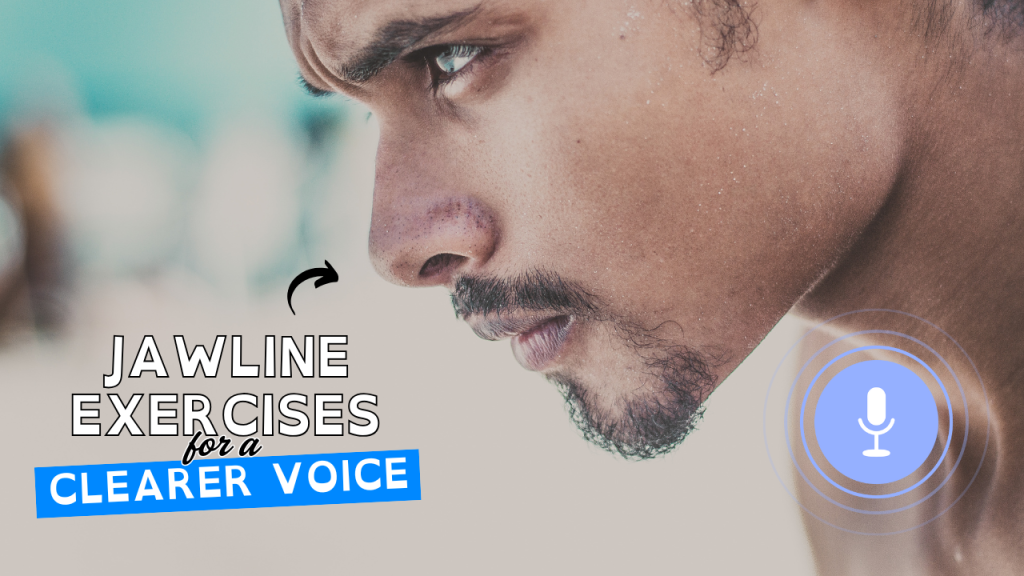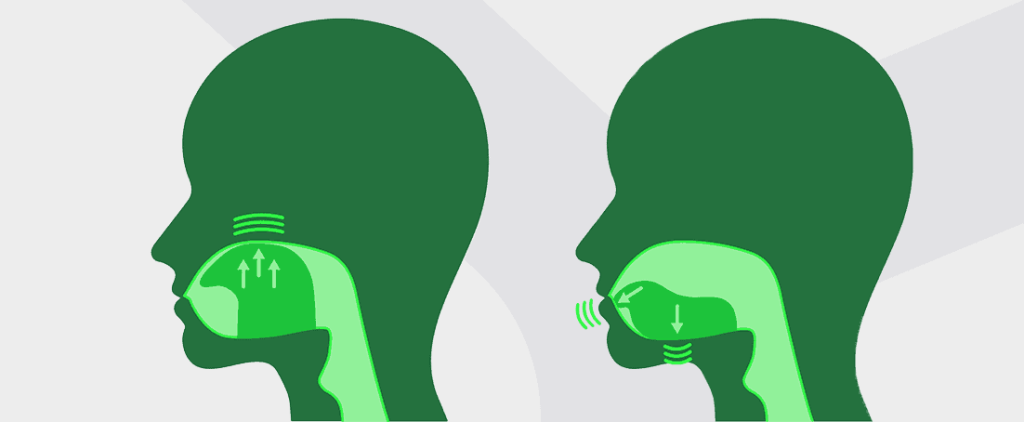Have you ever wondered how a toned jawline and improved vocal strength could be connected? The answer lies in the muscles of your face and throat, which play a crucial role in the quality of your voice.
While most people focus on physical exercises for their body, jawline exercises are often overlooked as an effective way to improve both facial appearance and vocal performance.
This article will take you through how jawline exercises can help you achieve a clearer voice, while also toning your face for an enhanced aesthetic appeal.

Table of Contents
Results After 30 Days of Jawline Exercises
| Effect | Expected Outcome |
|---|---|
| Jawline Definition | Noticeable improvement in jawline tone, with a firmer, more defined appearance. |
| Voice Clarity | Enhanced vocal clarity with improved articulation, making your speech more distinct and crisp. |
| Vocal Strength | Increased vocal power and resonance, allowing you to project your voice with more control and ease. |
| Reduced Tension | Significant reduction in tension around the jaw and throat, leading to a more relaxed voice and less strain. |
| Cheek Muscle Toning | A slight toning of the cheek area, contributing to a more youthful appearance. |
| Neck and Throat Tone | Improved muscle tone in the neck and throat, making your voice more dynamic and stable during prolonged speech. |
| Improved Posture | Strengthening of neck muscles can improve posture, particularly the alignment of your head and neck while speaking. |
| Better Breath Control | Enhanced control over breath during speech, helping with voice projection and endurance. |
Do’s and Don’ts of Jawline Exercises for a Clearer Voice
| Do’s | Don’ts |
|---|---|
| Perform exercises consistently (10–15 minutes daily) | Don’t overdo or strain your facial muscles |
| Warm up your face and neck before starting | Don’t expect instant results or drastic facial changes |
| Maintain proper posture while exercising | Don’t slouch or tilt your head awkwardly during routines |
| Focus on slow, controlled movements | Don’t use fast or jerky motions |
| Stay hydrated to support muscle function | Don’t neglect your overall vocal health and hydration |
| Combine with deep breathing for voice control | Don’t hold your breath during exercises |
| Monitor progress weekly for motivation | Don’t compare results with others |
| Stop if you feel pain or discomfort | Don’t continue exercises if they cause sharp pain |
| Include rest days if needed | Don’t ignore signs of muscle fatigue |
| Practice in a quiet, focused environment | Don’t multitask while doing the exercises |
The Link Between Your Jawline and Voice
Your jawline doesn’t just influence how your face looks—it can also impact the way you speak. The muscles in your face and throat, particularly the ones around your jaw and neck, are responsible for controlling vocal resonance and clarity.
A well-defined jawline is not just a symbol of fitness but also a sign of well-developed muscles that contribute to smoother speech and a more powerful voice.
When these muscles are not properly engaged or toned, your voice might sound weak, muffled, or strained. By focusing on exercises that specifically target these areas, you can enhance your vocal strength and clarity.
How Jawline Exercises Tone Your Face and Voice
Your jawline consists of several muscles, including the masseter (chewing muscle) and muscles in the lower part of the face, neck, and throat.
By toning these muscles through targeted exercises, you improve your ability to articulate clearly and increase vocal resonance. This means you’ll have a voice that sounds not only stronger but more dynamic and expressive.
Jawline exercises engage the facial muscles, which in turn can impact your vocal cords and throat. The more these muscles are strengthened, the more control you will have over your voice, making it clearer and more resonant.
Do Jawline Exercises Really Work?
Interesting Fact: Many singers and public speakers rely on facial exercises to enhance vocal performance. These exercises help them develop better control over their pitch, tone, and clarity.
It’s easy to assume that jawline exercises might only improve the way you look, but they also work wonders for the functionality of your voice. Strengthening the muscles involved in articulation, like the masseter, can lead to greater vocal strength, as these muscles are crucial for pronunciation and sound resonance.
Effective Jawline Exercises to Try
Here are some effective exercises that target the muscles of the jaw, neck, and throat to help improve your vocal clarity and tone:
1. Jaw Flex

A simple but powerful exercise, the jaw flex involves gently clenching and relaxing your jaw. This strengthens the jaw muscles and helps release any tension in the throat, which may otherwise affect the clarity of your voice.
- How to do it: Clench your jaw as tightly as possible without straining for 5 seconds, then relax. Repeat this for 10-15 repetitions.
2. Neck Stretch

The muscles in your neck are closely linked to your vocal performance. This stretch helps to release any tension in the neck and jaw, making it easier to speak clearly and project your voice.
- How to do it: Tilt your head to one side, bring your ear toward your shoulder, and hold for 10 seconds. Switch sides. Perform 5-10 repetitions on each side.
3. Chin Lifts

Chin lifts help tone the muscles around the jaw and neck, and by engaging the throat muscles, they also improve vocal control.
- How to do it: Tilt your head back and look at the ceiling. Pucker your lips and stretch them forward as if you are trying to kiss the ceiling. Hold for 5-10 seconds. Repeat for 10-15 repetitions.
4. The Fish Face

This exercise helps to tone both the cheeks and the jaw muscles, which can contribute to clearer enunciation and better vocal strength.
- How to do it: Suck in your cheeks and lips as if you’re making a fish face. Hold for 5-10 seconds and then relax. Repeat for 10-15 repetitions.
5. Tongue Press

A great way to improve vocal control, the tongue press strengthens the muscles at the base of the tongue and can help in clearer speech.
- How to do it: Press your tongue firmly against the roof of your mouth, hold for 5-10 seconds, and release. Repeat 10-15 times.
Myths About Jawline Exercises and Voice
There are a few misconceptions about jawline exercises and their effect on voice. One common myth is that jawline exercises only improve facial aesthetics and do not influence voice quality.
However, as we’ve seen, these exercises target crucial muscles that contribute to both facial appearance and vocal strength.
Another myth is that jawline exercises can quickly change your voice overnight. Like any fitness routine, consistency is key. Regular practice of jawline exercises over time will yield the best results, both in terms of facial tone and vocal strength.
Conclusion
Jawline exercises are not just about enhancing your facial appearance—they can also be a powerful tool for improving vocal strength and clarity. By focusing on the muscles around your jaw, neck, and throat, you can tone your face and achieve a clearer, more dynamic voice.
Whether you’re a singer, public speaker, or someone looking to improve their vocal abilities, incorporating these exercises into your routine will bring noticeable benefits.
With consistent practice, you’ll notice a stronger, more resonant voice and a more toned jawline, helping you feel more confident in your speech and appearance.
Frequently Asked Questions (FAQs)
How long should I practice jawline exercises daily?
For best results, aim to practice jawline exercises for about 10-15 minutes a day. Consistency is key, so try to incorporate these exercises into your daily routine.
Can jawline exercises change the shape of my face?
Jawline exercises can help tone the muscles in your face, which may lead to a more defined jawline over time. However, they will not drastically alter the bone structure of your face.
Will jawline exercises help with my voice if I have a weak or soft voice?
Yes! Strengthening the muscles in your jaw, neck, and throat can improve vocal control, clarity, and resonance, which in turn helps to produce a stronger and clearer voice.
How soon will I notice results from jawline exercises?
Results vary depending on consistency and individual factors, but you may start seeing noticeable improvements in jawline definition and vocal clarity within 2-4 weeks of consistent practice.
Do jawline exercises work for both men and women?
Absolutely! Jawline exercises are beneficial for anyone who wants to improve the definition of their jawline and enhance vocal strength, regardless of gender.
Can I combine jawline exercises with other facial exercises?
Yes, you can! Combining jawline exercises with other facial exercises can help you achieve a more toned face overall. Just be sure not to overstrain any particular muscle group.
Do I need special equipment for jawline exercises?
No, you don’t need any special equipment. Most jawline exercises can be done using just your body weight and without any tools. Just focus on controlled movements and proper technique.
Can jawline exercises prevent voice strain during long speaking engagements or performances?
Yes, regular practice of jawline exercises can help alleviate tension in your throat and jaw, reducing the likelihood of voice strain during extended speaking or singing sessions.
Are there any risks associated with jawline exercises?
When done correctly, jawline exercises are generally safe. However, overexerting or using improper technique can lead to discomfort or strain. Always start slow and listen to your body.
Can jawline exercises help with other vocal issues, like hoarseness?
While jawline exercises can improve overall vocal strength and clarity, they may not directly address underlying issues like hoarseness. If you have persistent vocal problems, it’s best to consult a voice coach or medical professional.





